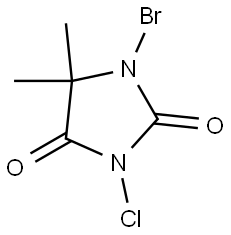SAFETY INFORMATION
| Signal word | Danger |
|---|---|
| Pictogram(s) |
 Flame Over Circle Oxidizers GHS03  Corrosion Corrosives GHS05  Exclamation Mark Irritant GHS07 |
| GHS Hazard Statements |
H272:Oxidising liquids;Oxidising solids H314:Skin corrosion/irritation |
| Precautionary Statement Codes |
P260:Do not breathe dust/fume/gas/mist/vapours/spray. P271:Use only outdoors or in a well-ventilated area. P280:Wear protective gloves/protective clothing/eye protection/face protection. |
COMPUTED DESCRIPTORS
| Molecular Weight | 241.47 g/mol |
|---|---|
| XLogP3 | 1.3 |
| Hydrogen Bond Donor Count | 0 |
| Hydrogen Bond Acceptor Count | 2 |
| Rotatable Bond Count | 0 |
| Exact Mass | 239.93012 g/mol |
| Monoisotopic Mass | 239.93012 g/mol |
| Topological Polar Surface Area | 40.6 Ų |
| Heavy Atom Count | 11 |
| Formal Charge | 0 |
| Complexity | 231 |
| Isotope Atom Count | 0 |
| Defined Atom Stereocenter Count | 0 |
| Undefined Atom Stereocenter Count | 0 |
| Defined Bond Stereocenter Count | 0 |
| Undefined Bond Stereocenter Count | 0 |
| Covalently-Bonded Unit Count | 1 |
| Compound Is Canonicalized | Yes |
PRODUCT INTRODUCTION
description
1-Bromo-3-chloro-5,5-dimethylhydantoin (BCDMH) is an organobromide compound. It is structurally related to hydantoin. It is a white crystalline compound with a slight bromine and acetone odor and is insoluble in water, but soluble in acetone. BCDMH is used as a solid halohydantion product for water disinfection and is an excellent source of both chlorine and bromine as it reacts slowly with water releasing hypochlorous acid and hypobromous acid along with 5,5-dimethylhydantion. It is primarily used as a chemical disinfectant for recreational water and drinking water purification. BCDMH was described as being responsible for an epidemic of irritant contact dermatitis in the UK (1983). It is prepared by first brominating, then chlorinating 5,5-dimethylhydantoin.
